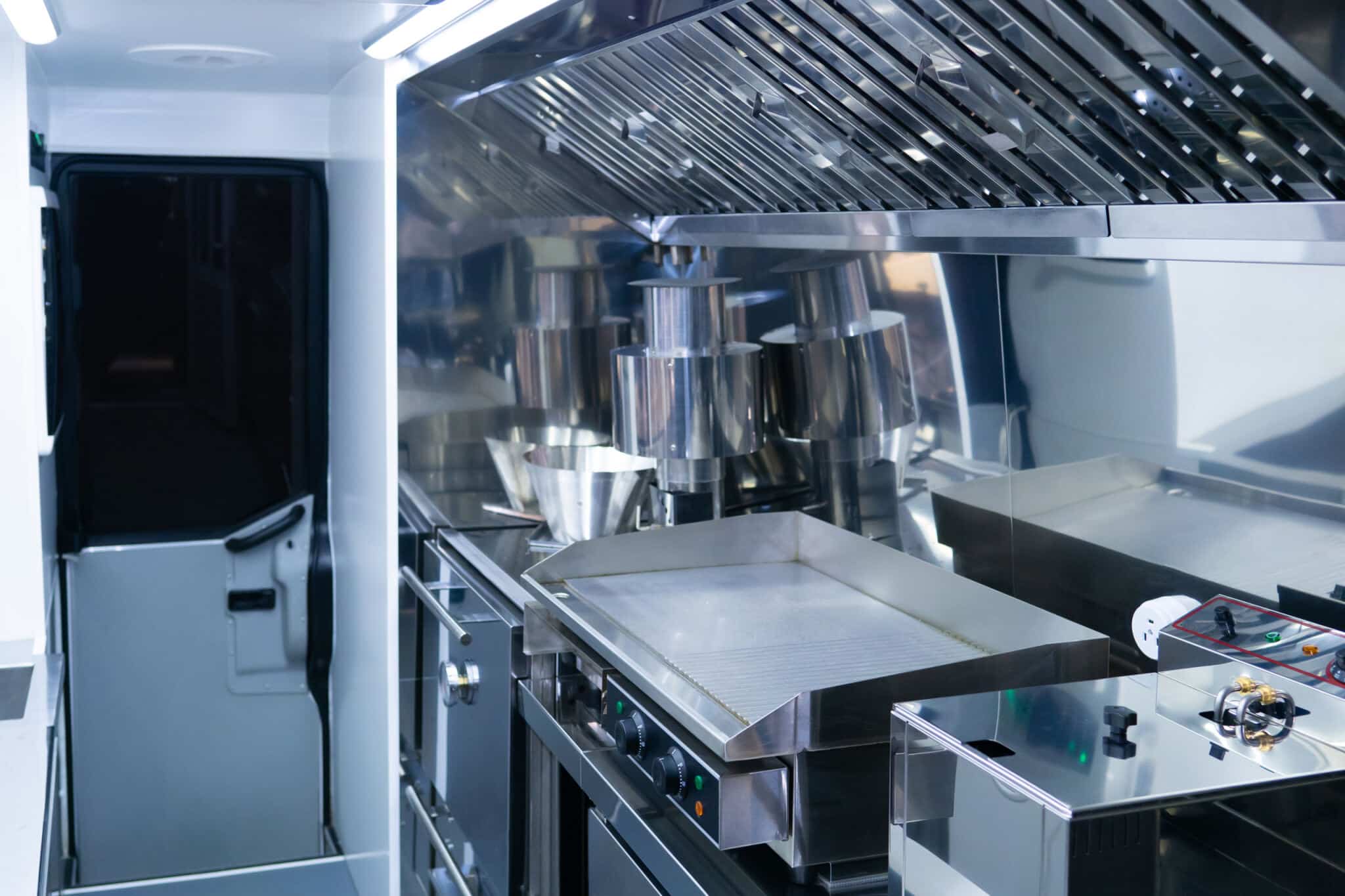In a busy commercial kitchen, each cooking session releases a mix of airborne grease droplets, mist and vapour, plus steam, smoke and particulate matter that hitch a ride on rising heat currents.
To understand the grease ‘journey’, it may be helpful to build an example.
The Harbour Lane Bistro
Let’s assume that we’re looking at The Harbour Lane Bistro – a busy, mid-sized restaurant in inner-city Sydney. The Harbour Lane Bistro is a popular venue and serves 100 meals, six nights a week. The kitchen was fully renovated by the current owners and includes a well-designed and diligently maintained exhaust system with 9 metres of rectangular ductwork between the canopy and the exhaust fan.
How much airborne grease and grease vapour is created when cooking?
Let’s consider cooking a 300-gram steak. Depending on the cut and cooking method, cooking would typically result in 20 to 30% weight loss. This translates to a loss of 75 to 90 grams per steak, primarily from water evaporation and rendered fat. Of this, around 5 to 10% of the lost weight becomes airborne grease mist or vapour, amounting to approximately 4 to 9 grams per steak.
The Harbour Lane Bistro serves 100 steaks a day, six days a week. Over this period, the restaurant could release an estimated 2.4 to 5.4 kilograms of airborne grease mist and vapour into its exhaust system every week.
That’s just the steaks.
Adding sides and accompaniments to the menu significantly increases the volume of airborne grease mist and vapour, as many common sides like fried potatoes, sautéed vegetables, and grilled items contribute additional grease and fat into the kitchen environment. A reasonable estimate for total weekly airborne grease production would be between 4.7 to 8.3 kilograms of airborne grease mist and vapour per week.
For ease of calculation, let’s pick a mid-point figure of 6.5 kilograms of airborne grease mist and vapour per week.
How efficient is the exhaust system?
We know that The Harbour Lane Bistro has a well-designed and properly maintained exhaust system.
The canopy is properly sized with adequate overhang (150–300 mm) to ensure optimal capture. Airflow is optimised for the kitchen to effectively capture particles and vapour, high-efficiency filters have been used, and the filters and ducts are well maintained to optimise airflow and capture efficiency.
Studies have shown that with proper design, maintenance, and advanced filtration, an exhaust system can capture and extract 85 to 95%of the steam, smoke, grease, and vapour generated by cooking.
Again, for ease of calculation, let’s pick a mid-point figure of 90% exhaust efficiency
How much airborne grease will settle elsewhere in the kitchen?
An exhaust system with 90% efficiency in a kitchen producing 6.5 kilograms of airborne grease mist and vapour per week could be expected to capture 5.8 kilograms per week.
This means that in the space of one month, approximately 3 kilograms of grease will notbe ‘captured’ by the exhaust system and could be expected to settle and condense on kitchen surfaces. All these surfaces must be regularly cleaned by kitchen staff.
How much airborne grease will be captured by the filters and how much escapes into the duct?
Clean baffle filters typically capture 80-90% of airborne grease particles while clean honeycomb filters can capture up to 90-95% of airborne grease particles. The Harbour Lane Bistro has baffle filters installed, so let’s assume an average efficiency of 85%.
In the last section, we saw that an exhaust system operating at 90% efficiency would capture’ 5.8 kilograms of airborne grease mist and vapour per week.
The grease filters would then trap 85% or 4.9 kilogramsof grease mist and vapour per week.
This means that 900 grams of grease mist and vapour pass through the filters into the duct every week.
In our next article, Part 4, we examine what happens to airborne grease that passes through the filters into the ductwork. How much grease is ejected by the fan and how much accumulates in the ductwork?

